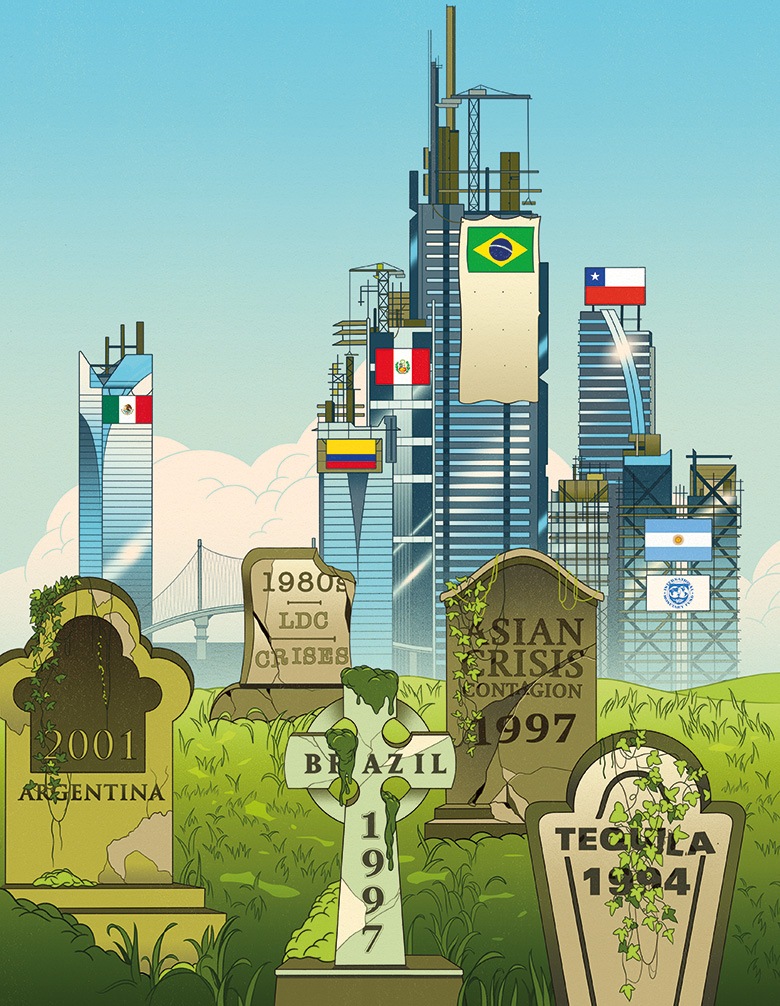RIO DE JANEIRO, BRAZIL – When the World Health Organization officially classified the coronavirus outbreak as a worldwide pandemic in early March, Latin America had no sense of the storm in health (and the economy) that was yet to come.
While the number of patients was growing in Europe – with Italy as the main hotspot in the Old Continent – and the disease was reaching the United States, to those south of Rio Bravo (Rio Grande, in the US) the situation still seemed manageable.
The shock to the production grid of China – the country where the disease first emerged, a major buyer of Latin American raw materials – seemed to be the great and almost the only contagion channel for the regional economy. Almost three months later, the picture is different: as the weeks passed, Latin America became one of the major economic victims of the virus.

In addition to falling basic products prices, there were also strong outflows of capital, the collapse of emigrant remittances (which greatly affected Mexico and Central America), and the collapse of foreign exchange revenues from tourism (a major blow to the Caribbean).
The combination of these variables placed the whole region in danger. The result is a shock that will far exceed the 1980s regional debt crisis and the Great Recession of a decade ago, according to the World Bank in its outlook report published on Monday, June 9th.
Latin America dances, to a great extent, to the sounds of its two largest economies, Brazil and Mexico – the two most exposed to a world value chain that has crumbled – and this year the shock will be nearly fatal for both: -8 percent and -7.5 percent falls in GDP, according to projections by the multilateral institution.
The third-largest economy, that of Argentina, will face a 7.3 percent drop and will accumulate three straight years of negative numbers. Peru, which will suffer a 12 percent economic decline as a result of a huge health shock and the collapsing prices of the raw materials it exports, completes a picture of dire economic projections: the subcontinent is only one step away from its greatest recession since joint record-keeping began in the early 1960s. Things need to change drastically if the bloc is not to close 2020 with a collapse of 7.2 percent, two points worse than the average projection for the overall world economy.
The deterioration of health conditions, faster than elsewhere on the planet, also conditions the projected rebound for next year, which will be noticeably less than for the rest of the world: 2.8 percent, against 4.2 percent. Among the major countries, Brazil will experience greater difficulty (2.2 percent) while Mexico, to a lesser extent (three percent).
All of this seems likely, notwithstanding the fact that most central banks and governments in the region have launched ambitious monetary and fiscal stimuli in support of short-term social assistance, small businesses and the health system.
These are commendable attempts – much greater in some cases (Peru) than in others (Mexico) – but they ultimately will face the turmoil of Latin American reality, from which only small Guyana escapes, growing 51 percent thanks to its oil fields that have just entered the exploration phase.
The World Bank’s economists acknowledge that the outlook is “extraordinarily uncertain: it depends on the magnitude and final duration of the pandemic,” and on the projections, based on a remarkable relaxation of the confinements starting in July.
“The coronavirus has dramatically worsened economic conditions in Latin America and the Caribbean, which are heading for a greater decline than during the global financial crisis [in 2008 and 2009],” say the bank’s experts in their outlook report, in which they alert to the “underreporting” of contagion in some of the bloc’s nations.
There are basically four reasons for the collapse: the constraints to prevent the spread of a pathogen that is still at its peak in the region; the above-mentioned lower price of raw materials; the deterioration of financial conditions; and the impact on the region of the general decline of the world economy.
“The short-term horizon remains subject to several significant risks, including the potential resurgence of a wave of social protests like last year’s, an even more adverse market reaction to the increase in public debt, or greater uncertainty about the recovery of the service sector,” the Bank warns.
With the three beacons that have guided regional economic growth over the past five years (Colombia, Chile and Peru) now shuttered and its two major powers immersed in a crisis inconceivable only a few months ago, Latin America can only hope for a speedy recovery of the economy and world trade.
However, all indications are that the return to life, although quick after a “blitz” crisis, will not be as vertical as some predicted in its initial days: the V already looks more like the Nike swoosh symbol, with the second line much less upright than would be desired in all Latin American capitals. At the domestic level, the region requires its three major engines (Brazil, Mexico and, to a lesser extent, Argentina) to return to the growth path. Until this happens, it will continue its journey through the desert.

